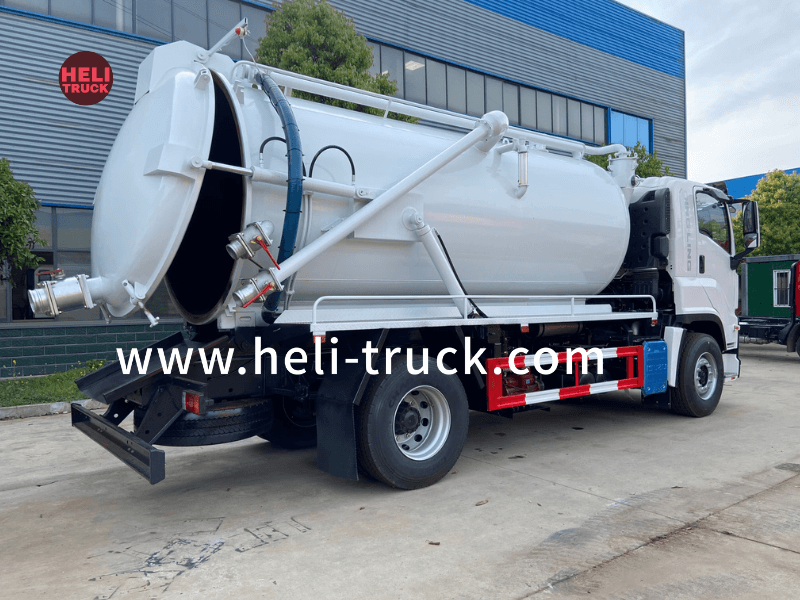Introduction
Firefighters are tasked with responding to various emergencies, including fires, vehicle accidents, hazardous material spills, and medical emergencies. One crucial aspect of firefighting operations is the coordination of resources and personnel at the scene of an incident. Effective incident command is essential to ensure a coordinated and efficient response, particularly when dealing with complex and dynamic situations. In this article, we will explore the role of fire truck incident command, strategies for enhancing incident command effectiveness, and best practices for managing fireground operations.
The Importance of Fire Truck Incident Command
Fire truck incident command refers to the system of managing resources, making critical decisions, and coordinating response efforts at the scene of a fire or other emergency incident. The incident commander (IC) is responsible for overall management of the incident, including prioritizing objectives, allocating resources, ensuring firefighter safety, and coordinating communication with other agencies and stakeholders.
Effective incident command is essential for several reasons. First and foremost, it ensures the safety of firefighters and other emergency responders by providing clear direction and coordination of activities. A well-organized incident command system also helps to prevent chaos and confusion at the scene, allowing for a more efficient and effective response. Additionally, effective incident command can help to minimize property damage and save lives by ensuring a swift and coordinated firefighting effort.
Strategies for Enhancing Fire Truck Incident Command
1. Establishing a Command Structure: One of the first steps in effective incident command is establishing a clear command structure. The incident commander should be identified early in the response and should have the authority to make critical decisions. In addition to the IC, other key roles may include safety officers, operations chiefs, and sector commanders, depending on the size and complexity of the incident.
2. Communication: Communication is a critical component of incident command. The IC must establish clear communication channels and protocols to ensure that all responders are informed of the incident's status, objectives, and tactics. Effective communication can help to prevent misunderstandings, coordinate resources efficiently, and ensure that all responders are working towards a common goal.

3. Size-Up and Risk Assessment: Before taking any action, the IC must conduct a thorough size-up of the incident to assess the situation and identify potential hazards. This includes evaluating the size and scope of the fire, the presence of any hazardous materials, structural stability, and potential risks to firefighters. A risk assessment should be conducted to determine the level of risk versus the potential benefit of various firefighting tactics.
4. Establishing Incident Objectives: The IC should establish clear and achievable incident objectives based on the size-up and risk assessment. These objectives should be communicated to all responders and should guide decision-making throughout the incident. Objectives may include life safety, property conservation, environmental protection, and incident stabilization.
5. Resource Management: Effective resource management is essential for a successful firefighting operation. The IC must allocate resources, such as fire trucks, personnel, and equipment, based on incident priorities and objectives. Resources should be used efficiently and effectively to achieve the desired outcomes.
6. Tactical Decision-Making: The IC must make timely and informed tactical decisions based on the incident's conditions and objectives. Fuel Tank Truck may include selecting firefighting tactics, establishing incident control points, implementing evacuation procedures, and requesting additional resources as needed. Tactical decisions should be communicated clearly to all responders and adjusted as the incident evolves.
7. Incident Action Planning: Developing an incident action plan is a key component of effective incident command. The plan outlines the incident objectives, strategies, tactics, and resource assignments for each operational period. The IC should develop and communicate the plan to all responders, ensuring that everyone understands their roles and responsibilities.
Best Practices for Managing Fire Truck Incident Command
1. Train and Prepare: Fire departments should provide regular training on incident command principles and procedures to ensure that all personnel are familiar with their roles and responsibilities. Training should include tabletop exercises, simulations, and real-life scenarios to practice incident command skills in a controlled environment.
2. Establish Standard Operating Procedures: Fire departments should develop and implement standard operating procedures (SOPs) for incident command to provide a consistent and structured approach to managing emergencies. SOPs should outline roles and responsibilities, communication protocols, incident management procedures, and resource allocation guidelines.
3. Utilize Technology: Technology can enhance incident command effectiveness by providing real-time situational awareness, communication tools, and resource tracking capabilities. Fire departments should consider using incident command software, mobile applications, and communication devices to streamline information sharing and decision-making.
4. Conduct After-Action Reviews: After every incident, fire departments should conduct after-action reviews to evaluate the effectiveness of the incident command system and identify areas for improvement. Feedback from responders, observations from the incident, and data analysis should be used to inform future training and planning efforts.
5. Collaborate with Stakeholders: Effective incident command requires collaboration with other agencies, organizations, and stakeholders involved in the response. Fire departments should establish relationships with mutual aid partners, law enforcement agencies, emergency medical services, and municipal authorities to facilitate coordinated and integrated emergency response efforts.
Conclusion
Fire truck incident command is a critical function in managing emergency incidents and ensuring the safety of firefighters and the public. By following strategies for enhancing incident command effectiveness and implementing best practices for managing fireground operations, fire departments can improve their response capabilities and better protect lives and property. Through training, preparation, and collaboration, fire departments can enhance their incident command systems and provide a more coordinated and efficient response to emergencies.
